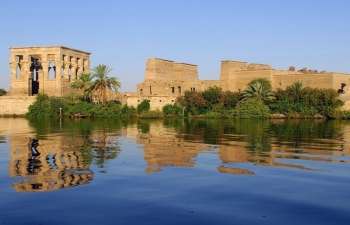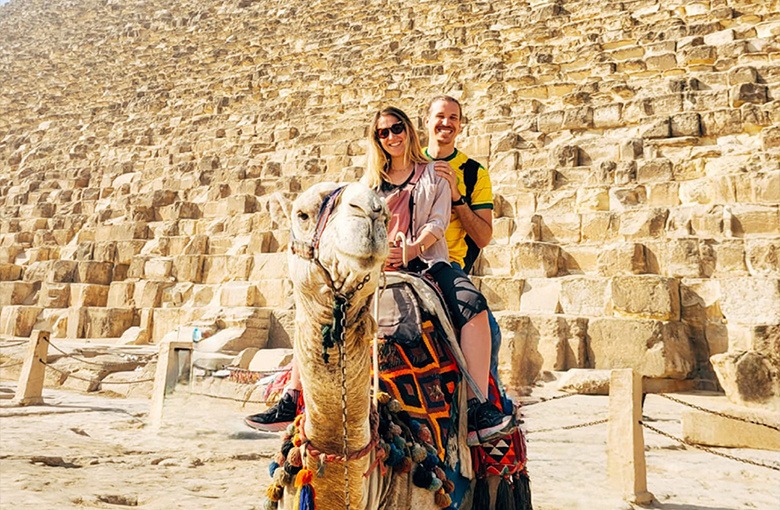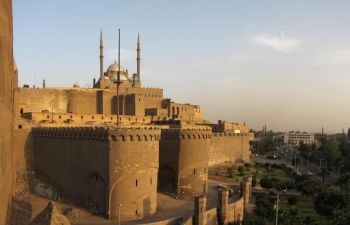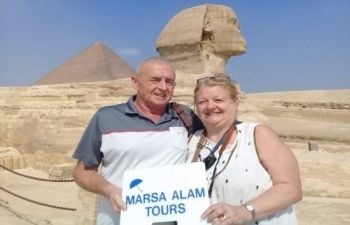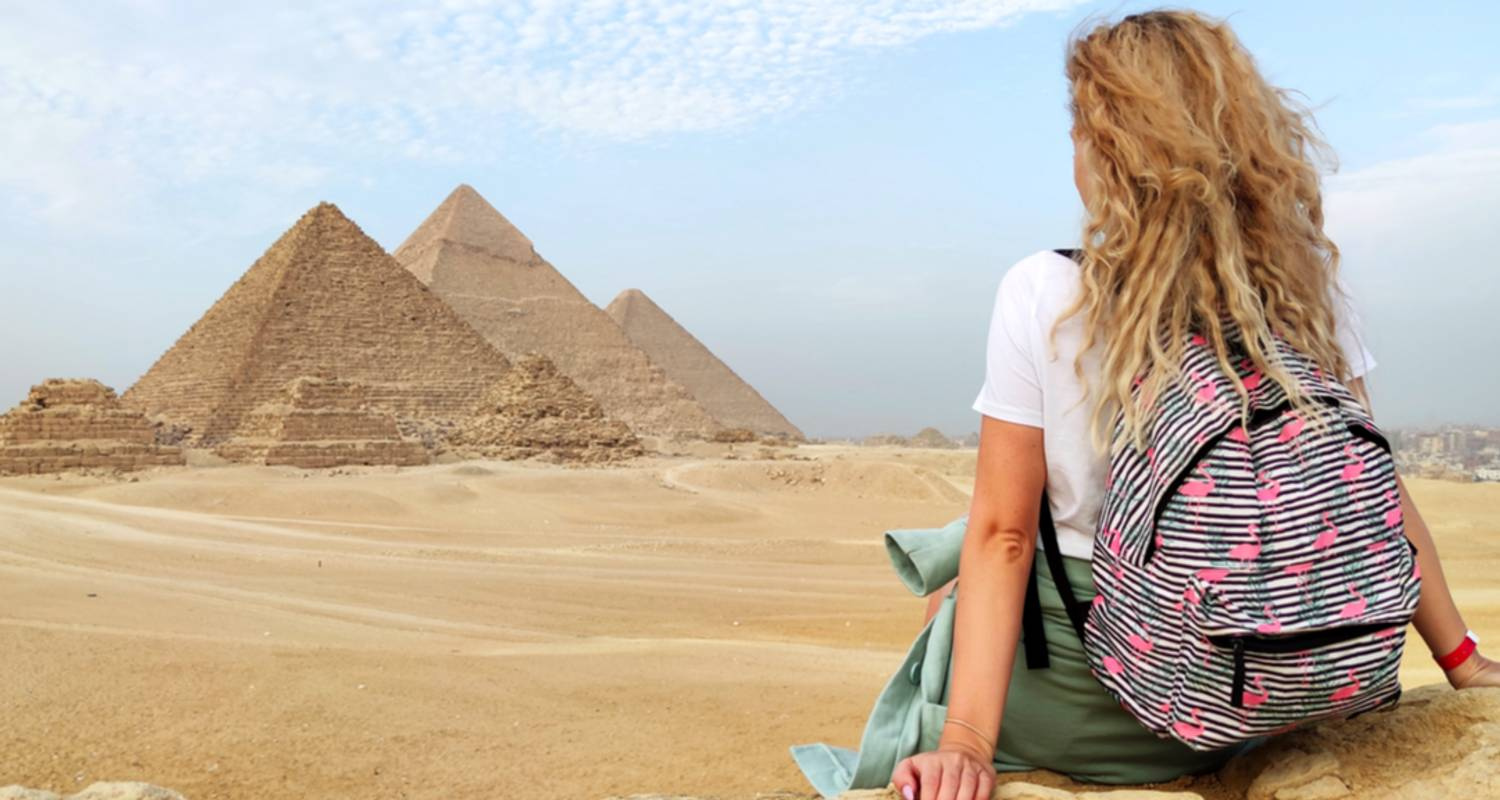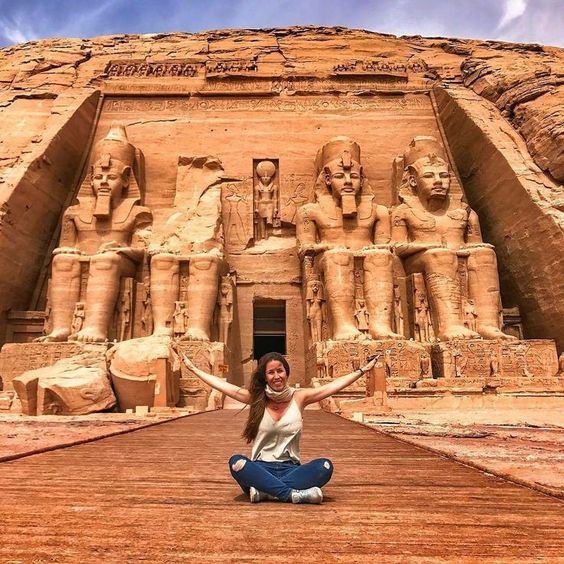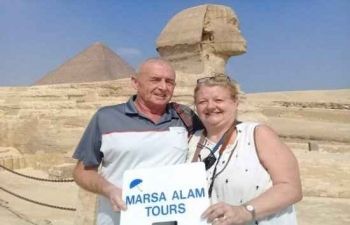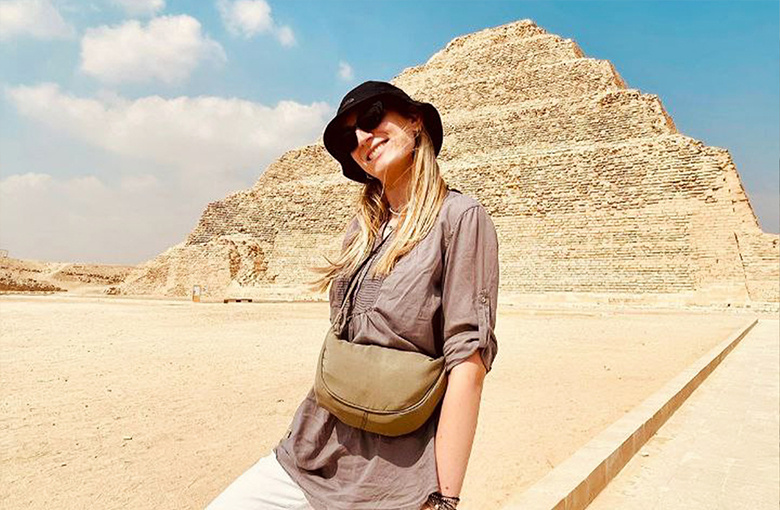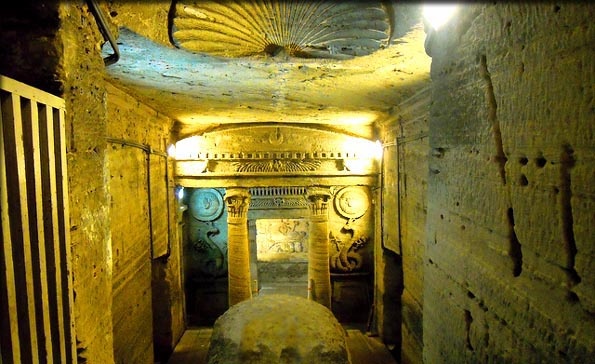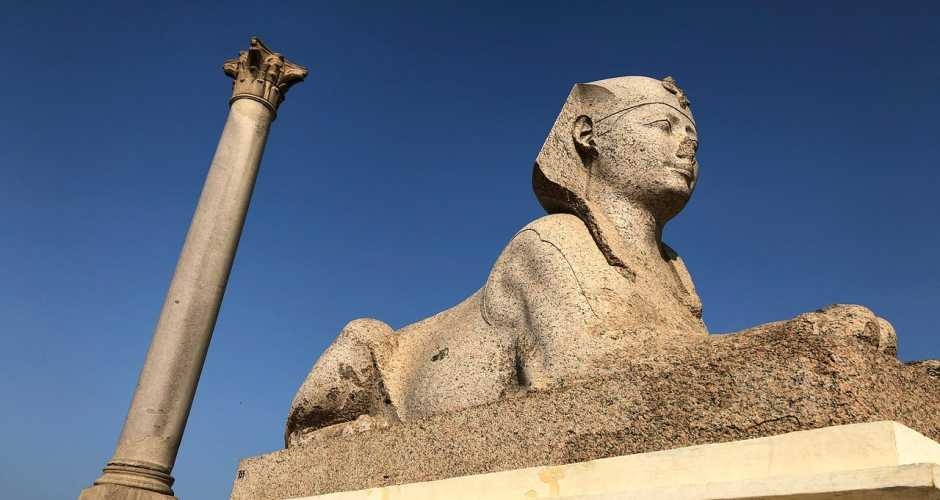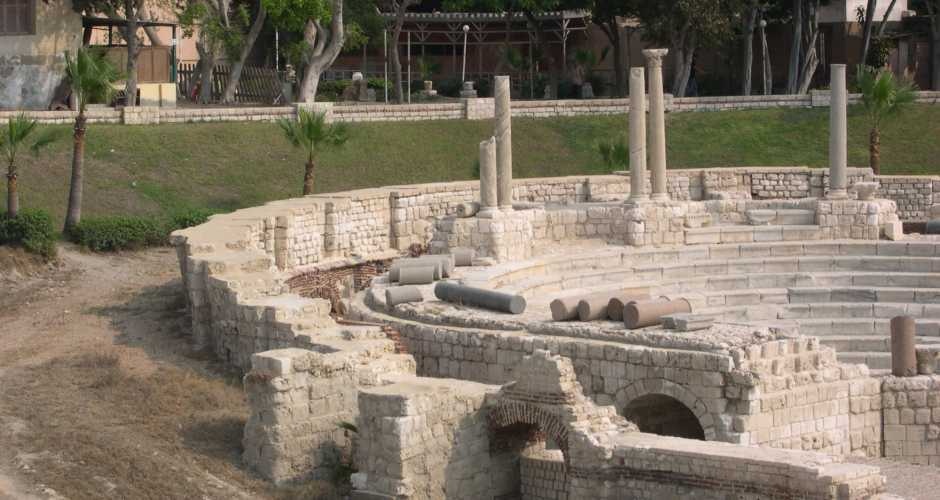de Catacombe van Kom el Shoqafa in Alexadria
Kom el-Shuqafa de catacombe vertegenwoordigt de grootste bekende Romeinse begraafplaats in Egypte. Met drie rijen graven die plaats bieden aan maximaal 300 lijken. de bouwstijl van het graf weerspiegelt de Grieks-Romeinse stijlen.
de Catacombe van Kom el Shoqafa in Alexadria
Kom el Shoqafa the Catacomb represent the largest known Roman burial place in Egypt. With three tiers of tombs that could accommodate up to 300 corpses. the architectural style of the tomb mirrors Greco-Roman styles. This can be seen in the wall decoration, which shows a unique combination of Egyptian, Greek, and Roman artistic traditions. Later, the tomb was most likely expanded to allow for the burial of more corpses the tomb is opened daily but it suffering from underwater, No photo. The Catacomb is the best tourist attractions in Alexandria and Must-See place in Alexandria.
 Entry is through a spiral staircase; the bodies of the dead would have been lowered on ropes down the centre of this circular shaft. The staircase leads off to a rotunda with a central well piercing down into the gloom of the flooded lower level. When the catacombs were originally constructed in the 2nd century AD, probably as a family crypt, the rotunda would have led only to the triclinium (to your left) and principal tomb chamber (straight ahead). But over the 300 years that the tomb was in use, more chambers were hacked out until it had developed into a hive that could accommodate more than 300 corpses.
Entry is through a spiral staircase; the bodies of the dead would have been lowered on ropes down the centre of this circular shaft. The staircase leads off to a rotunda with a central well piercing down into the gloom of the flooded lower level. When the catacombs were originally constructed in the 2nd century AD, probably as a family crypt, the rotunda would have led only to the triclinium (to your left) and principal tomb chamber (straight ahead). But over the 300 years that the tomb was in use, more chambers were hacked out until it had developed into a hive that could accommodate more than 300 corpses.
 The triclinium was a banqueting hall where grieving relatives paid their last respects with a funeral feast. Mourners, who returned to feast after 40 days and again on each anniversary, reclined on the raised benches at the centre of the room around a low table. Back in the rotunda, head down the stairs to the principal tomb, the centrepiece of the catacombs. Here, an antechamber with columns and pediment leads through to an inner sanctum. The typical Alexandrian-style decoration shows an odd synthesis of ancient Egyptian, Greek and Roman funerary iconography. The doorway to the inner chamber is flanked by figures representing Anubis, the Egyptian god of the dead, but he is dressed as a Roman legionary and sports a serpent’s tail representative of Agathos Daimon, a Greek divinity.
The triclinium was a banqueting hall where grieving relatives paid their last respects with a funeral feast. Mourners, who returned to feast after 40 days and again on each anniversary, reclined on the raised benches at the centre of the room around a low table. Back in the rotunda, head down the stairs to the principal tomb, the centrepiece of the catacombs. Here, an antechamber with columns and pediment leads through to an inner sanctum. The typical Alexandrian-style decoration shows an odd synthesis of ancient Egyptian, Greek and Roman funerary iconography. The doorway to the inner chamber is flanked by figures representing Anubis, the Egyptian god of the dead, but he is dressed as a Roman legionary and sports a serpent’s tail representative of Agathos Daimon, a Greek divinity.
 From the antechamber a couple of short passages lead to a large U-shaped chamber lined with loculi – the holes in which the bodies were placed. After the body (or bodies, as many of the loculi held more than one) had been placed inside, the small chamber was sealed with a plaster slab. Back up in the rotunda, four other passageways lead off to small clusters of tombs. One of these gives access to an entirely different complex, known as the Hall of Caracalla. This had its own staircase access (long-since caved in) and has been joined to Kom Ash Shuqqafa, which it pre-dates, by industrious tomb robbers who hacked a new passageway. Beside the hole in the wall, a painting shows the mummification of Osiris and the kidnapping of Persephone by Hades, illustrating ancient Egyptian and Greek funerary myths.
From the antechamber a couple of short passages lead to a large U-shaped chamber lined with loculi – the holes in which the bodies were placed. After the body (or bodies, as many of the loculi held more than one) had been placed inside, the small chamber was sealed with a plaster slab. Back up in the rotunda, four other passageways lead off to small clusters of tombs. One of these gives access to an entirely different complex, known as the Hall of Caracalla. This had its own staircase access (long-since caved in) and has been joined to Kom Ash Shuqqafa, which it pre-dates, by industrious tomb robbers who hacked a new passageway. Beside the hole in the wall, a painting shows the mummification of Osiris and the kidnapping of Persephone by Hades, illustrating ancient Egyptian and Greek funerary myths.
 As impressive as all these sounds, if you’ve been to the tombs on Luxor
’s west bank, Kom Ash Shuqqafa will surely leave you underwhelmed: most of the walls are unadorned, nearly all the paintings had faded to invisibility. You can easily walk to the catacombs from Pompey's Pillar, which is also located in Campus. If walking from the pillar, start from in front of the ticket office. With your back to the entrance, take the small street to the right, slightly uphill and away from the tram tracks. Follow this street for several hundred metres past a small mosque on the left; the entrance to the catacombs is in the next block on your left.
As impressive as all these sounds, if you’ve been to the tombs on Luxor
’s west bank, Kom Ash Shuqqafa will surely leave you underwhelmed: most of the walls are unadorned, nearly all the paintings had faded to invisibility. You can easily walk to the catacombs from Pompey's Pillar, which is also located in Campus. If walking from the pillar, start from in front of the ticket office. With your back to the entrance, take the small street to the right, slightly uphill and away from the tram tracks. Follow this street for several hundred metres past a small mosque on the left; the entrance to the catacombs is in the next block on your left.

